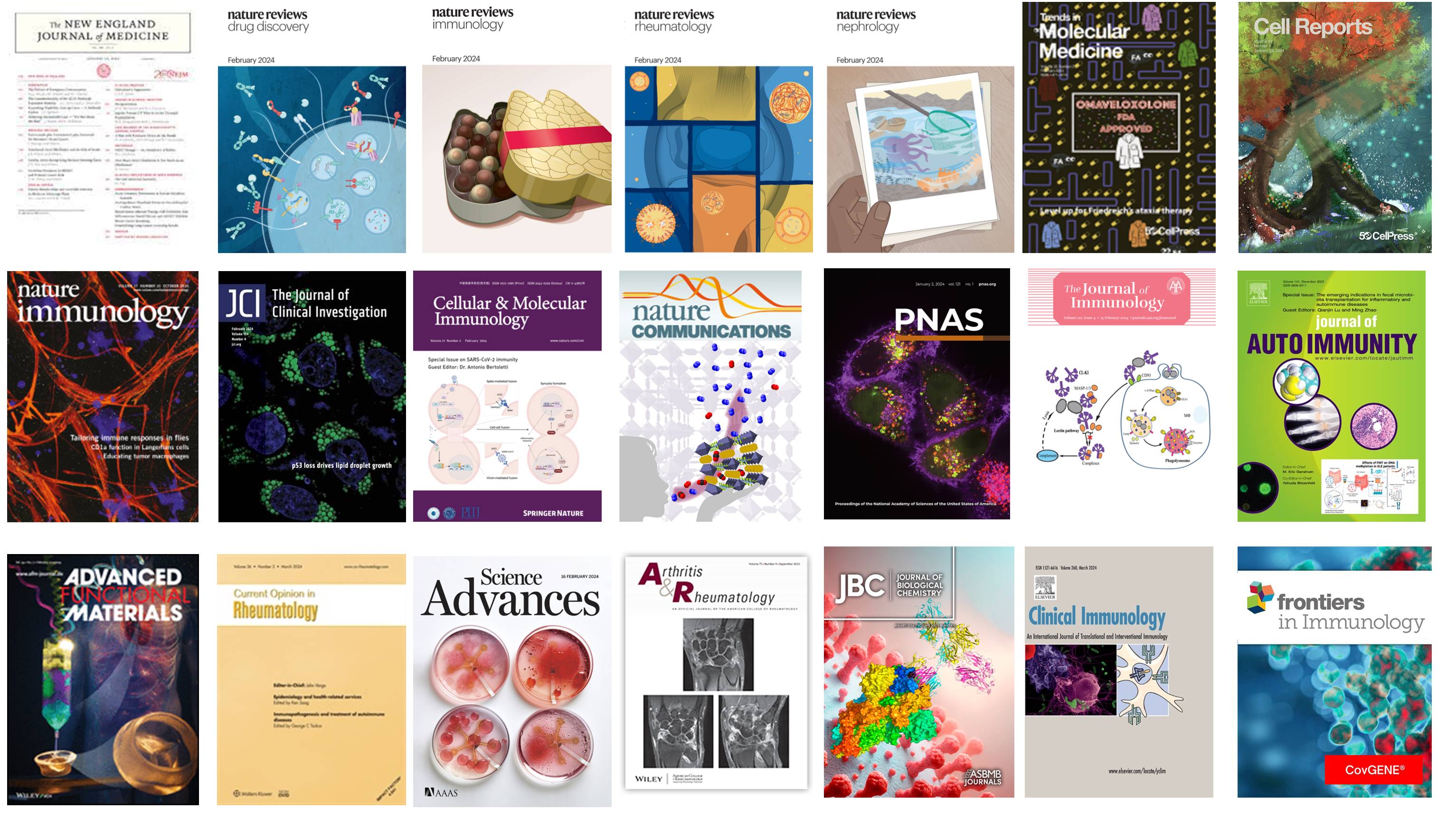Kolios, A. G. A., Yoshida, N., & Tsokos, G. C. (2021). New therapeutic approaches in systemic lupus erythematosus. Curr Opin Rheumatol, 33, Article 2. https://doi.org/10.1097/BOR.000000000000077200002281-202103000-00011 [pii]
PURPOSE OF REVIEW: This review gives an overview of the recently published clinical trials in systemic lupus erythematosus (SLE). RECENT FINDINGS: Our continuously improving understanding of the cellular and molecular mechanisms, which are involved in the pathogenesis of SLE, has inspired the performance of multiple clinical trials in an attempt to modify recognized targets. Here, we summarize results obtained from recent trials, which used monoclonal antibodies blocking cytokines, blockers of costimulatory molecules or deleting immune cells, small drug inhibitors of kinases and replenishment of cytokines. SUMMARY: The therapeutic options for patients with SLE grow continuously and in parallel it raises the need for pathogenetic mechanism-based precision medicine so that we may select the right treatment for the right patient.

